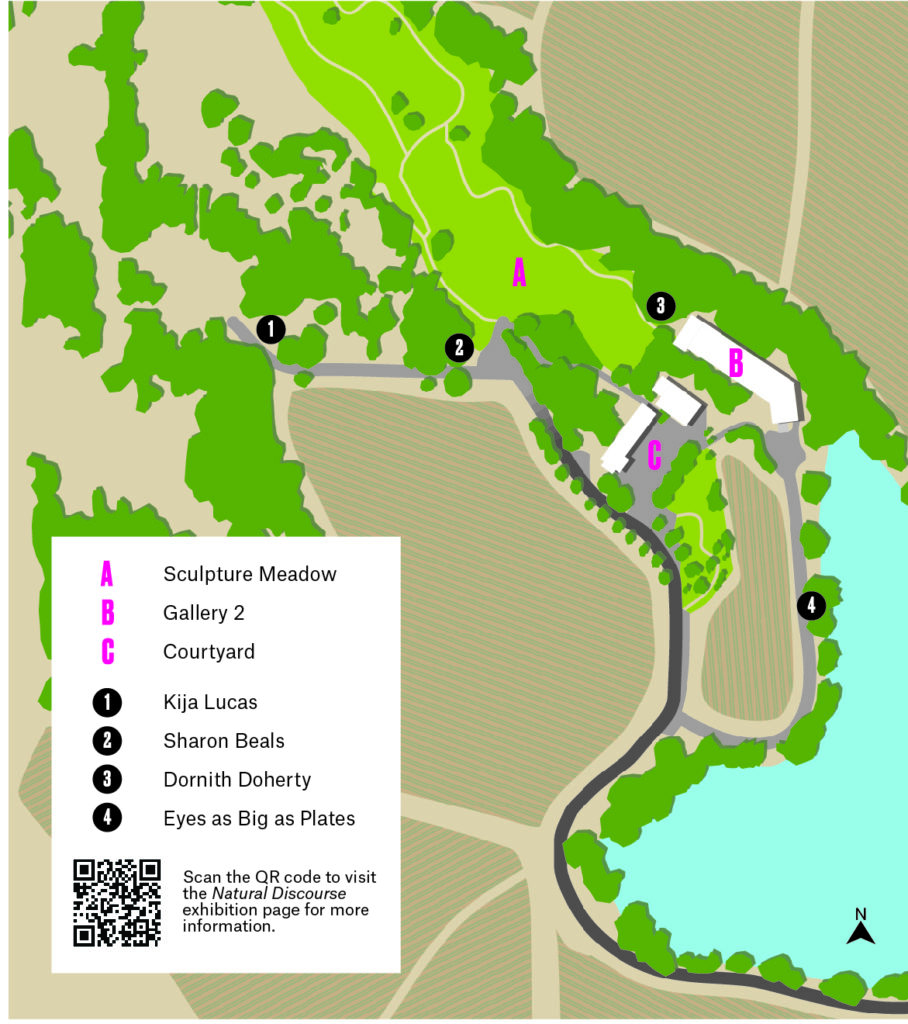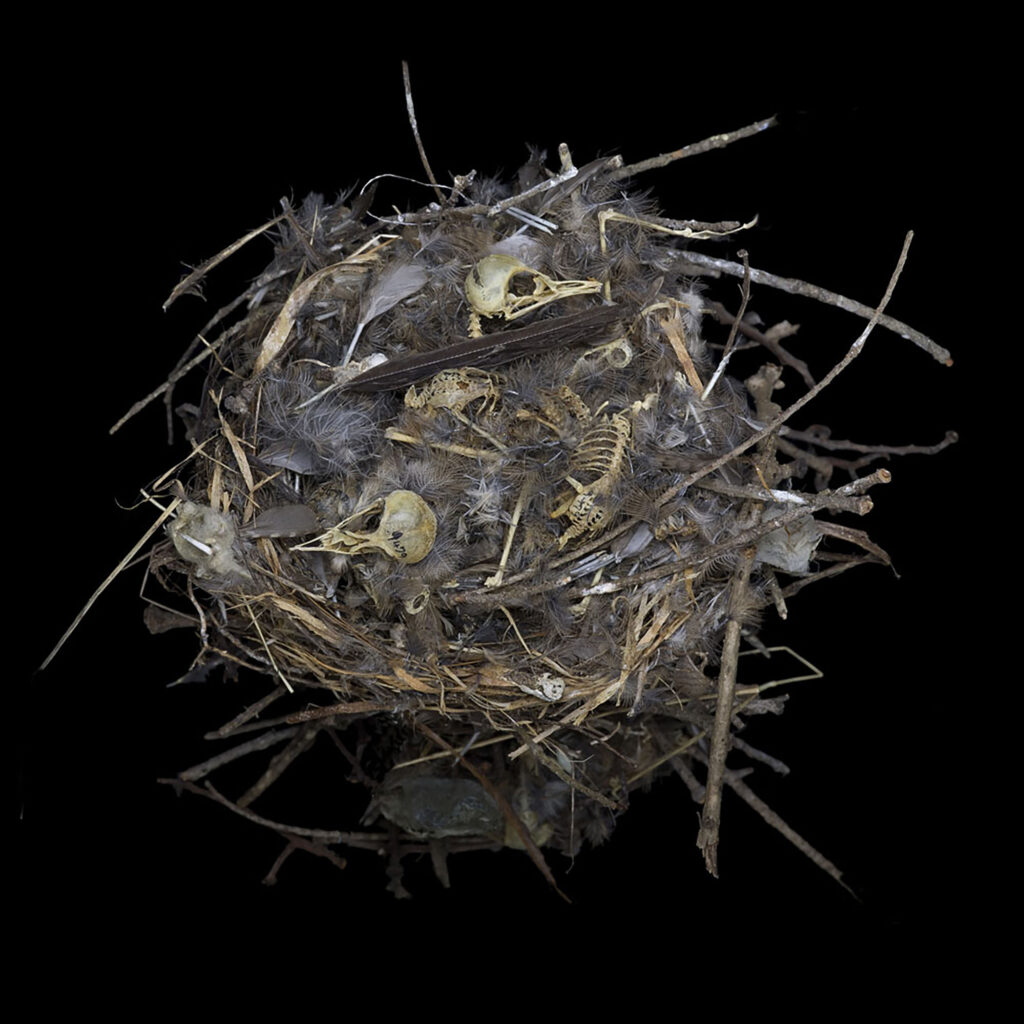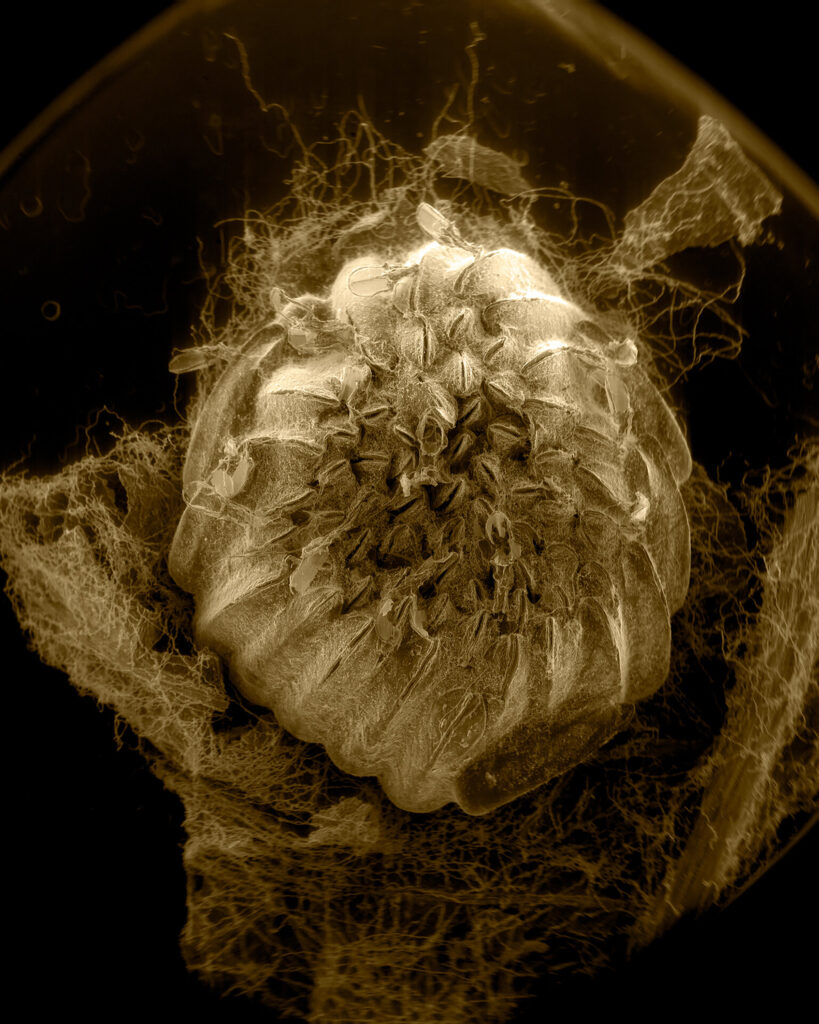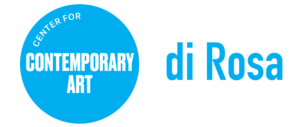
Use this guide to explore the art and artists of Natural Discourse @ di Rosa!
Download exhibition labels here
Kija Lucas
Eucalyptus Bloom, 2023
Latex ink print
Latex ink print
Smolder #33, 2016
Latex ink print
Latex ink print
Olive Bloom, 2023
Latex ink print
Latex ink print
Oak Bloom, 2023
Latex ink print
Latex ink print
In July of 2015, Kija Lucas was teaching in a Napa classroom with many windows when she noticed that it felt like magic hour at one in the afternoon. She went outside to investigate and realized the sun was blocked by smoke and ash raining down from the sky. This experience led to her work on the Smolder series from 2016 to 2019. The charred wood in these images was collected in Napa and Sonoma counties.
The Eucalyptus Bloom, Olive Bloom and Oak Bloom images were made in Spring 2023 and represent the regeneration and new growth after fire and the plentiful rains of the past winter. The choice of native and non-native olive and eucalyptus flowers represent Lucas’ ongoing interest in botanical colonialism and the idea of native/invasive species.
Sharon Beals

Latex ink print
Sharon Beals is the author and photographer of Nests: Fifty Nests and the Birds that Built Them. The Nest series documents nest and egg specimens dating from the 1800s to the present day from the California Academy of Sciences, the Museum of Vertebrate Zoology in Berkeley, the Western Foundation of Vertebrate Zoology, the Cornell University Museum of Vertebrates and the National Museum of Natural History at the Smithsonian.
Dornith Doherty

Latex ink print
The history of the insect pest phylloxera and its destruction of European vineyards has roots in European colonization of the Americas in the 15th and 16th centuries. In the late 19th century, phylloxera decimated the vineyards planted at di Rosa’s site.
The remedy for the blight was to graft domesticated European grapevines onto wild American phylloxera-resistant rootstock. These new plants were hybrid entities, expressing characteristics derived from both scion and rootstock. These plants reconstituted the vineyards and grafting continues to be standard practice today.
These images are highly magnified electron microscopies of phylloxera galls. These lustrous sepia-toned photographs make reference to the mid-19th century, when photography was invented and the phylloxera blight occurred.
Eyes As Big As Plates
Eyes as Big as Plates # Gunn-Tove (Norway 2015)
© Karoline Hjorth & Riitta Ikonen
© Karoline Hjorth & Riitta Ikonen
Eyes as Big as Plates # Karin (Norway 2019)
© Karoline Hjorth & Riitta Ikonen
© Karoline Hjorth & Riitta Ikonen
Eyes as Big as Plates # Mane (Senegal 2019)
© Karoline Hjorth & Riitta Ikonen
© Karoline Hjorth & Riitta Ikonen
Eyes as Big as Plates # Brit (Norway 2018)
© Karoline Hjorth & Riitta Ikonen
© Karoline Hjorth & Riitta Ikonen
